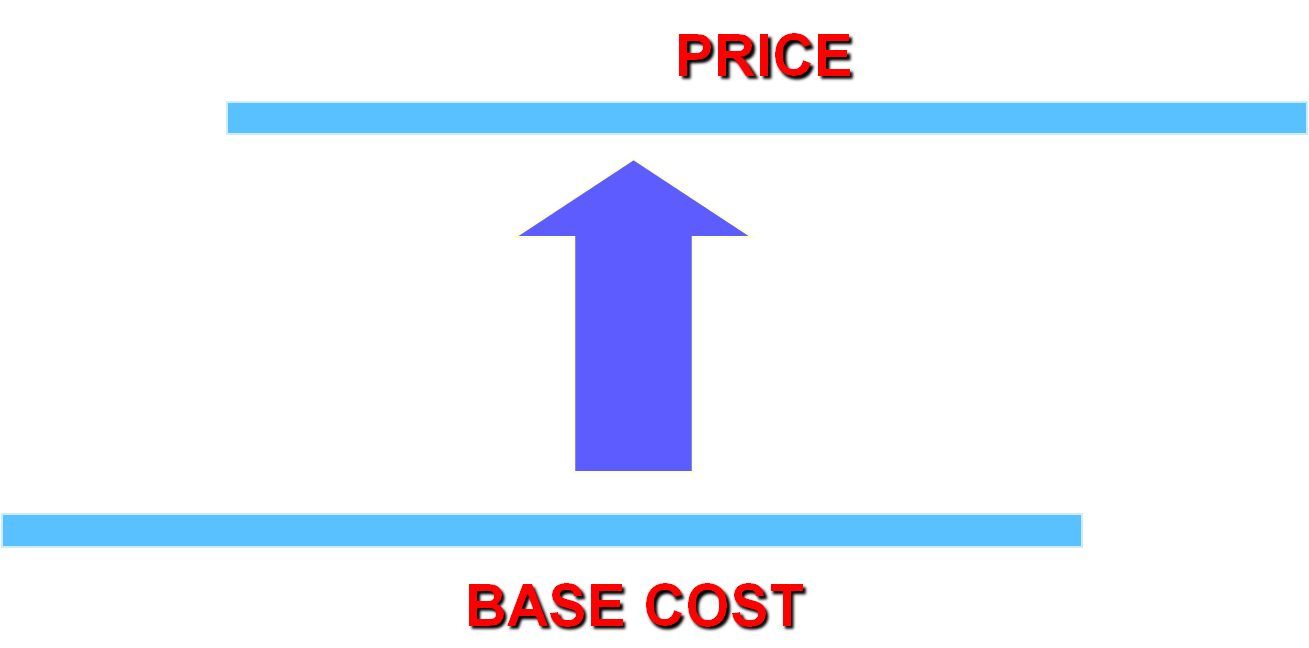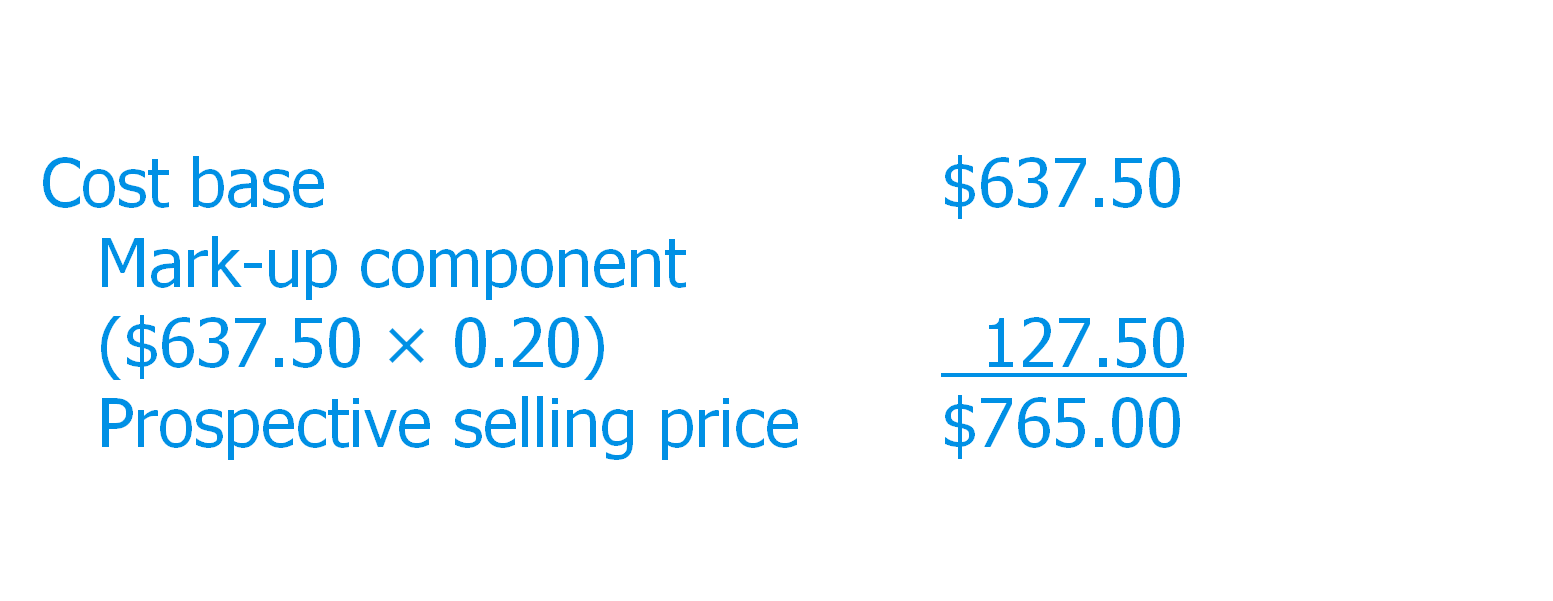Cost-plus Pricing
The cost-plus pricing approach is the opposite to that of target costing.
Refer to Target Costing for more information.
Under target costing, the target price is first set and then the target cost is worked out.
Under this current approach, the cost acts as a base. Then a profit mark-up is applied onto the cost to obtain the final price.

In other words, the general formula for setting a cost-based price is to add a mark-up component to the cost base:

Here’s a worked example:
Teddy Computer’s engineers have redesigned the Complex model of computer into the Superlative model at a new cost of $637.50.
Teddy desires a 20% mark-up on the full unit cost.
What is the prospective selling price?

But how is the 20% determined? Usually it’s not just plucked out of the air. It reflects the target rate of return on investment – the investment being the entire capital sunk into the business, not just into the product. This will usually include the assets of the business, like buildings, factories, and equipment, amongst other things. When a business invests a certain amount, it expects a return, calculated based on the amount of the investment. This return must be achieved for it to be worthwhile for Teddy to embark upon the business. The percentage of the return is called target rate of return on investment.
In Teddy’s case, let’s assume that the capital investment needed to manufacture the Superlative model is $75 million, and Teddy’s (pre-tax) target rate of return on investment is 17%.
The target annual operating profit that Teddy needs to earn from Superlative would be:
$75,000,000 × 0.17 = $12,750,000
Hence, the target operating profit per unit is:
$12,750,000 ÷ 100,000 units = $127.50/unit....which is the mark-up component applied to the cost base (see above).
Return to Introduction to Management Accounting from Cost-Plus Pricing.






